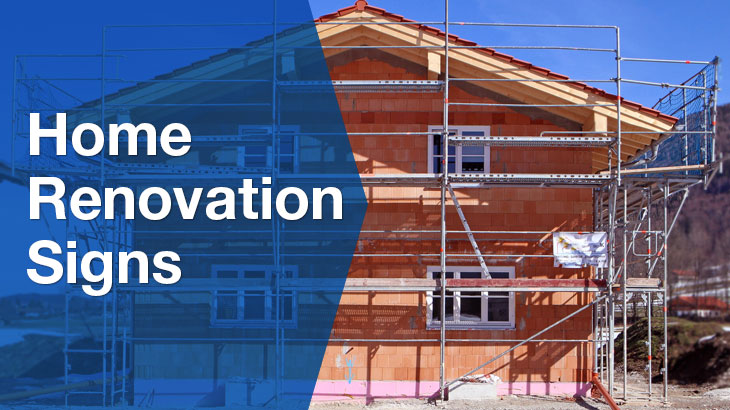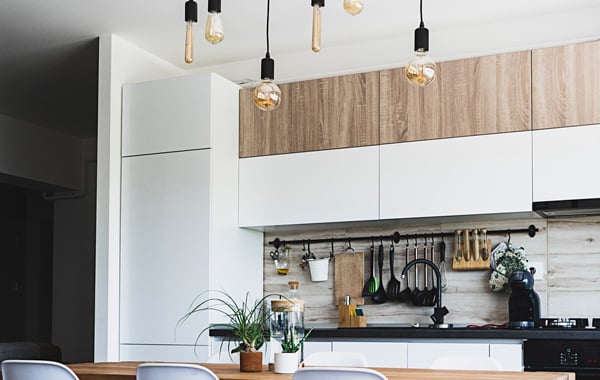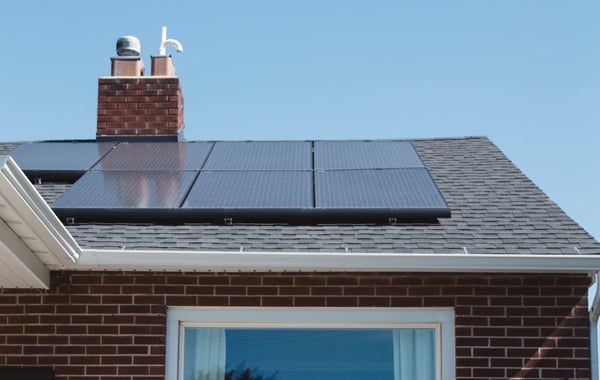Is your home desperate for renovation? 4 sure signs to look out for
Renovation is an important consideration for homeowners all over the world. After you’ve lived in your home for a while, you start wondering whether you should make some changes. After all, this is your home – the personal space that you’ve loved since you moved in. Your home represents you and should always reflect your […]

Renovation is an important consideration for homeowners all over the world.
After you’ve lived in your home for a while, you start wondering whether you should make some changes.
After all, this is your home – the personal space that you’ve loved since you moved in. Your home represents you and should always reflect your personal tastes.
“The best rooms have something to say about the people who live in them.” — David N. Hicks, interior designer
You look for signs that an upgrade is in order, but you’re not sure, so you put your renovation plan on hold. You keep neglecting it and telling yourself that you don’t need to right now. You can always do it later.
Until it’s too late.
You’ve waited too long, and now renovations cost more, and your home needs even more drastic changes.
Don’t delay renovating for so long that you reach this point. There are easy ways to know whether your home is desperate for a transformation. You don’t have to look for signs on your own and stress over it.
Here are four signs that it’s time to change things up in your home.
1. Your house doesn’t give you that homely feeling anymore
The simplest way to know whether you should renovate is by walking into a room and considering how it makes you feel.
“A room should never allow the eye to settle in one place. It should smile at you and create fantasy.” — Juan Montoya, interior designer
If a room doesn’t make you smile or brighten up your day, if it doesn’t bring you peace and comfort, it needs changing.
Your home could lack that comfortable atmosphere it once had because:
- The colours in your rooms don’t inspire any emotion
- You’re bored of its overall appearance
- Your kitchen and bathroom designs look outdated
- Your rooms lack warmth, both in a literal and figurative sense
You don’t have to change everything about your home if this is the case. Most times, simple and affordable changes can make a big difference in how you feel about your space.
These include:
- Applying a fresh coat of paint to each room with colours that incite the emotion you’re looking for
- Refinishing your existing cabinets and storage spaces in your kitchen and bathroom
- Installing a heating system in rooms where you need warmth (kitchen, living room)
- Replacing small, old household items like handles, faucets and hooks with new ones
Find the best painter in your area and bring life back into your rooms with the colours you choose.
“I am going to make everything around me beautiful—that will be my life.” — Elsie De Wolfe, interior decorator
2. You need to increase or reduce space
One major issue you have to consider after living in your home for some time involves space. You can sense if you either have too much of it or not enough.
You come home from work one day, and you feel like there’s too much going on or nothing at all.
You’re likely to feel you need more space if you’ve started a family and it’s grown over time. And you’ll feel like you need to fill space when there are fewer people living in the household.
Space becomes a question of functionality and how best to use what you have.
If you need to increase space, consider:
- Getting rid of clutter and only keeping the essentials by adopting a minimalist lifestyle
- Building wall cabinets and drawers in your rooms (kitchen, bathroom and bedroom)
- Installing hooks to hang cooking equipment in the kitchen and towels in the bathroom

Image from: Ionut Vlad
- Building a wall niche in your bathroom so it appears bigger
- Pulling down a wall to combine two rooms and increase the size
Hire an architect in your area today to plan your room extension and change your floor layout.
If you’re looking to reduce the space, consider:
- Redesigning an empty room and turning it into a workroom for your hobbies and projects
- Getting rid of the dining room by making it an extension of the kitchen if it’s not used often
- Using one of your rooms as a storage space for all the items you rarely use
3. Components of your home need fixing
With time, the fixtures in your home age and need fixing or replacing. This can occur when:
- Tiles detach and fall off or break
- Your appliances use up more energy and increase your bills
- Cabinets don’t close as they should and fall apart
- The electrical wiring in your home becomes hazardous
- The paint on your home exterior starts to chip away
- Your lighting no longer works as it should
- The roof starts to leak, leading to mould or mildew from the moisture indoors
Find the most affordable and qualified roofers around today. Fix any leaking issues you have with your current roof.
When any of these situations happen, it’s time to renovate your home. You can use these solutions for the problems you face:
- Refinishing tiles and applying new, waterproof grout between them
- Installing long-lasting hardwood floors for convenience and appealing aesthetic
- Installing asphalt shingles on your rooftop for waterproofing
- Fixing or replacing your cabinets with the help of a qualified carpenter
- Replacing your current appliances with new ones
- Updating your electrical wiring and lighting every ten years to avoid any risks
- Repainting the outdoor walls of your home
4. You want to go green
Nowadays, more people are choosing to go green and reduce their carbon footprint. It’s the most important trend of our time as we see the effects of climate change unfold. It also saves you money on your energy bill.
If you decide to go green, then you may want to consider incorporating a ‘passive design’ into your household.
“Passive design’ is a design that takes advantage of the climate to maintain a comfortable temperature range in the home. Passive design reduces or eliminates the need for auxiliary heating or cooling, which accounts for about 40% (or much more in some climates) of energy use in the average Australian home.” — YourHome
Ideas to apply a passive design in your home include:
- Installing sustainable insulation to keep the heat in
- Planting trees outside
- Installing windows in areas around the house that enable you to make the most of passing breezes
- Using building materials with a high thermal mass rating to effectively store heat in your home
- Installing solar panels to save energy

Image from: Vivint Solar
- Replacing your current water faucets, fixtures and showerheads with water-saving options
- Installing efficient appliances to replace old ones to reduce your energy consumption
- Using sustainable materials like autoclaved aerated concrete, timber and mud-brick
- Installing a rainwater collection system to reduce the use and cost of mains water
- Renovating your home with GreenSmart-accredited tradespeople
“GreenSmart Professional Training is a 2-day course, run Australia-wide, providing you or your staff with recognised environmental building skills for more sustainable residential design and construction.” – Housing Industry Association (HIA)
Learn how much it costs to install a rainwater tank in your home and what factors affect the price.
Get Started
Now that you know these four sure signs your home needs a renovation, don’t waste any more time.
Choose to renovate if you don’t love your home, need to maximise space, need to fix it or want to go green.
Hire a professional builder today for the best and most affordable renovation results. Your home is desperate for it!